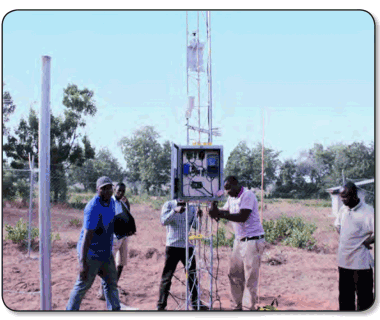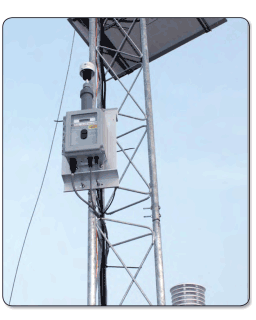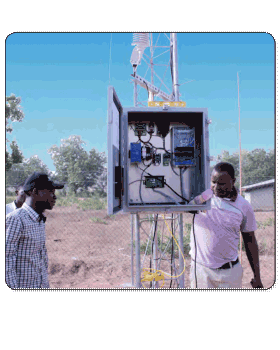-
English (US)
Choose your OTT HydroMet brand and region:



Weather and dust can greatly affect the power output of any solar-based energy system. The SUTRON brand delivered an Automatic Weather Station (AWS) with a Dust Monitor Sensor in order to help the Energy Center at KNUST observe and analyze the effect of dust on the sun’s radiation (i.e. global solar radiation).
SUTRON uses a Remote Dust Monitoring Sensor designed to provide accurate measurements of particle concentration (TSP) in an outdoor environment.
The sensor measures particulate concentration using a highly sensitive forward scatter laser nephelometer, having a measurement range of 0 to 100 mg/cubic meter or 0 to 100,000 ug/cubic meter.
The system is also supplied with a central Data Acquisition Server running SUTRON's XConnect data acquisition software. This software allows for automatic polling on a user defined schedule via GPRS.
This station is designed to transmit data to two different core parties, one of which is the KNUST Energy Center in Walewale, Ghana.
Inclement weather and dust can reduce a Photovoltaic (PV) system’s capacity to absorb solar energy. This station provides weather and dust data which will help the user understand the impact of dust on solar energy.
This project required that data be transmitted to two core parties. With SUTRON’s XLite 9210 Datalogger, we were able to transmit data to both parties at the same time thus providing reliable on demand and real-time data.
SUTRON’s XConnect Data Acquisition Software was supplied and installed on servers at two separate locations.
Data from the Automatic Weather and Dust Monitoring Station is transmitted via GPRS to both of these servers, making the data available to the user for further analysis and processing.